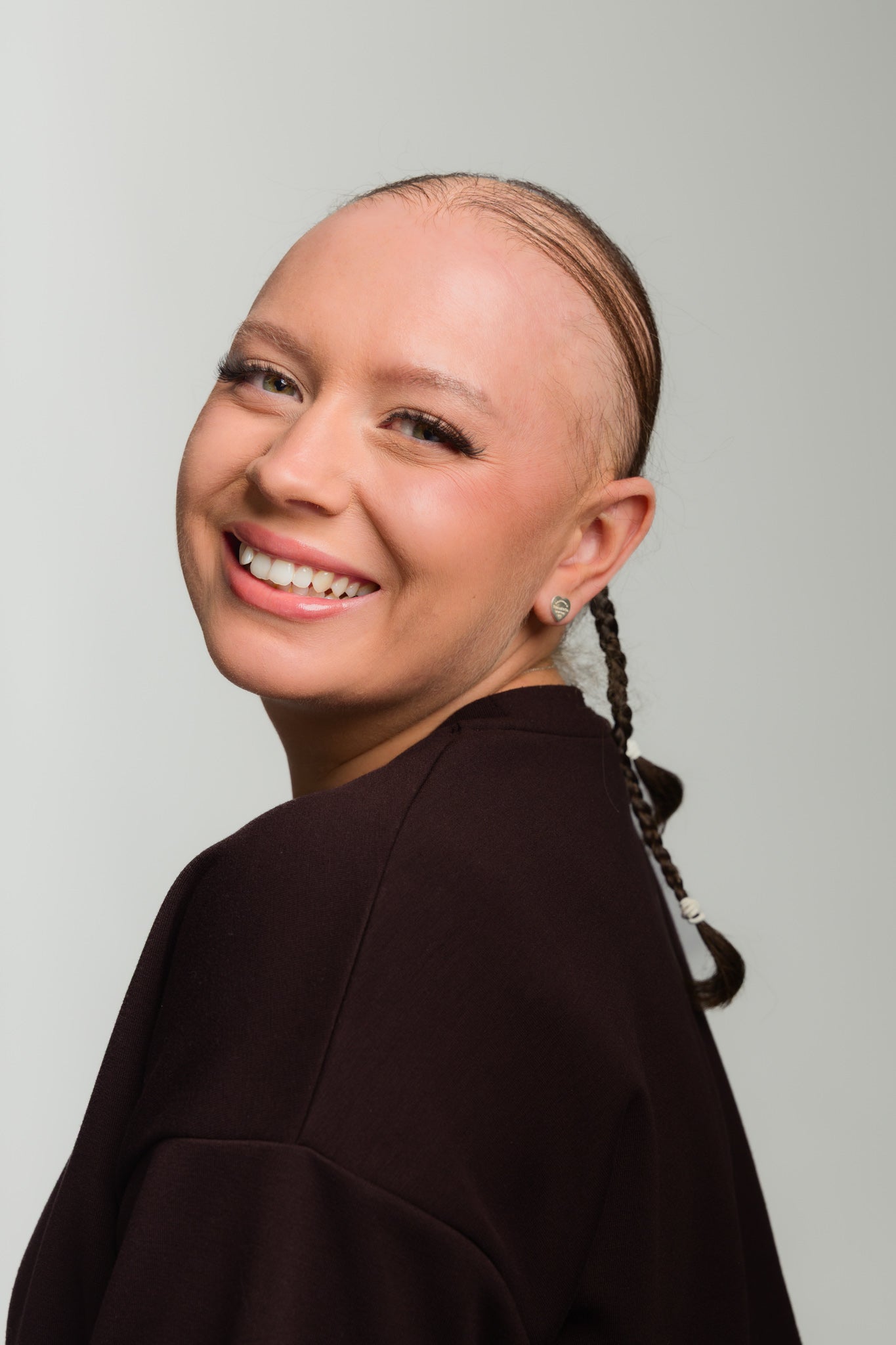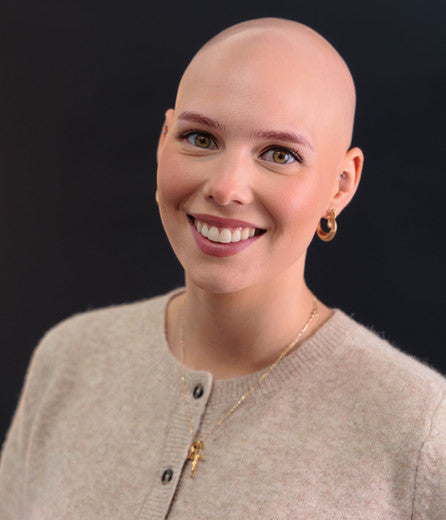
Understanding Alopecia: A Practical Guide to Hair Loss and Solutions

Alopecia, the medical term for hair loss, affects many women worldwide, often impacting self-esteem and daily life. This guide explains what alopecia is, how to recognise its forms, and the treatments available, from medical options to lifestyle changes.
You’ll find coping tools and support resources, plus practical advice on selecting premium human hair wigs from Nuola Wigs to help restore confidence. This article explores:
-
The fundamentals: definitions, causes, and diagnosis
-
A breakdown of alopecia types and their unique characteristics
-
Emotional well-being and practical daily management strategies
-
Exploring medical, natural, and lifestyle-focused treatments
-
Expert insights on choosing and caring for Nuola Wigs’ premium hair solutions
-
Recognising early indicators and knowing when to seek specialist advice
-
Accessing community support and empowerment resources
Alopecia: Causes, Symptoms, and Diagnosis
Primary Causes of Hair Loss in Women
Hair loss in women frequently stems from genetic predisposition, autoimmune responses, hormonal shifts, stress, and external influences.
These factors disrupt the hair growth cycle, leading to shedding or hindering regrowth. Understanding these categories clarifies why treatments differ and when aesthetic solutions, such as hair toppers or full wigs, may be a practical choice.
|
Cause |
Mechanism |
Characteristic |
|---|---|---|
|
Genetic |
Increased sensitivity to androgens shortens the hair growth cycle. |
Gradual, diffuse thinning. |
|
Autoimmune |
The immune system mistakenly attacks hair follicles, halting hair production. |
Distinct, coin-sized bald spots. |
|
Hormonal |
Imbalances in oestrogen or androgen levels alter follicle signalling. |
Thinning concentrated at the crown and along the part line. |
|
Stress |
Elevated cortisol levels trigger follicles to enter the resting phase prematurely. |
Sudden, widespread shedding. |
|
Traction |
Repeated tension or pulling damages hair follicles. |
Hair loss localised to areas of tension, often along the hairline. |
Each category of cause requires distinct management strategies. Genetic and hormonal hair loss may respond well to medical treatments, while autoimmune forms often benefit from immunotherapy or aesthetic prostheses that can provide immediate appearance restoration.
Common Symptoms of Alopecia
Alopecia can present with a variety of signs, from subtle thinning to complete baldness, and may be accompanied by nail changes or unusual scalp sensations. Early detection relies on noticing these symptoms and seeking professional evaluation before the condition progresses significantly.
-
Noticeable circular bald patches on the scalp.
-
A general reduction in hair density, creating diffuse thinning.
-
The presence of "exclamation point" hairs, which are shorter and narrower at the base, indicates autoimmune activity.
-
Changes in the nails, such as pitting or ridging, can reflect underlying follicular inflammation.
-
Sensations on the scalp, such as itching, tingling, or burning in affected areas.
Recognising these symptoms empowers you to take timely action. If patches enlarge or spread, exploring both medical treatments and confidence-boosting wig solutions can help.
Medical Diagnosis of Alopecia
The diagnostic process for alopecia typically begins with a thorough scalp examination and a review of your medical history. Further specialised tests may be needed. A dermatologist might perform a pull test to gauge hair fragility, use dermoscopy to examine follicle health, or conduct a scalp biopsy to rule out or identify scarring conditions.
Blood tests can detect autoimmune markers or hormonal imbalances, guiding the development of a targeted treatment plan. An accurate diagnosis helps predict the course of the condition, many cases of autoimmune-related hair loss can regrow, and guides you toward complementary options, such as high-quality human hair wigs, for immediate aesthetic restoration.
Types of Alopecia: Overview and Characteristics

Alopecia Areata: Key Features
Alopecia areata is an autoimmune condition characterised by the sudden onset of patchy hair loss, occurring when the immune system targets hair follicles. It commonly appears as round, coin-sized bald spots on the scalp, eyebrows, or other body hair.
Key indicators include exclamation point hairs found at the edges of the affected areas and, in about one-third of cases, nail pitting. While its course is unpredictable, many individuals experience spontaneous hair regrowth within a year.
For visible thinning or bald spots, custom hair toppers from Nuola Wigs offer seamless coverage and a natural-looking finish that blends beautifully with your existing hair.
Androgenetic Alopecia in Women
Female pattern hair loss, also known as androgenetic alopecia, is a genetically influenced condition where hair follicles become more sensitive to androgens. This sensitivity progressively shortens the hair growth cycle. Women typically observe diffuse thinning across the crown and a widening of the hair part, rather than distinct bald patches.
The condition often becomes more pronounced after menopause due to hormonal changes. Early intervention with topical minoxidil can help slow its progression, while a lightweight,HD lace, full lace, or lace-front wig can provide instant volume and styling versatility without sacrificing comfort.
Alopecia Totalis and Alopecia Universalis
Alopecia totalis is characterised by the complete loss of hair on the scalp, while alopecia universalis involves the loss of all body hair, including scalp, facial, and pubic hair. Both conditions are considered advanced forms of alopecia areata, where the immune system's attack on hair follicles becomes more widespread.
Although these types have a lower rate of spontaneous regrowth, emerging treatments like JAK inhibitors are showing promise in reactivating dormant follicles. In the interim, full-coverage premium human hair wigs can recreate a natural-looking hairline and restore facial framing, significantly boosting confidence.
Other Types of Alopecia
In addition to the primary forms, several other types of alopecia can disrupt hair growth through distinct mechanisms, each requiring tailored management approaches.
-
Telogen Effluvium is triggered by a significant physical or emotional shock, such as illness, surgery, or severe stress, which forces a large number of hair follicles into the resting phase, leading to diffuse shedding.
-
Traction Alopecia results from persistent pulling or tension on the hair, often caused by tight hairstyles, extensions, or headwear, leading to localised hair loss, typically along the hairline.
-
Scarring Alopecia (cicatricial alopecia) involves the permanent destruction of hair follicles, which are replaced by scar tissue, preventing future hair growth. This condition often requires early medical intervention.
Effective coping strategies may involve a combination of gentle hair care practices, nutritional support, and the use of hair prostheses that minimise tension while providing aesthetic confidence.
Navigating Hair Loss: Emotional Support and Practical Tips for Women
Emotional Impact of Alopecia on Women
Experiencing hair loss can evoke feelings of grief, diminished self-esteem, and anxiety, as hair is often deeply connected to personal identity and femininity. This psychological distress can lead to social withdrawal or a reluctance to participate in previously enjoyed activities.
Acknowledging the emotional toll is a crucial first step toward healing, whether through professional counselling, connecting with peers, or embracing confidence-boosting solutions like premium wigs that immediately restore your sense of self and social comfort.
Practical Strategies for Daily Hair Loss Management
Effective daily management involves a combination of stress reduction techniques, attentive scalp care, and leveraging supportive communities to maintain overall well-being and hair health.
-
Engage with peer-led support groups to share experiences and discover practical coping strategies.
-
Incorporate relaxation practices such as meditation, yoga, or deep-breathing exercises to help lower cortisol levels, which can impact hair follicles.
-
Adopt gentle hair care routines: avoid harsh chemical treatments, use soft brushes, and minimise heat styling.
-
Consider regular scalp massages to stimulate blood circulation and nourish the hair follicles.
These approaches foster resilience and complement medical or aesthetic interventions as you explore solutions to restore both your hair and your confidence.
Wigs and Hairpieces: Enhancing Confidence and Natural Appearance
High-quality wigs and hairpieces serve as both aesthetic enhancements and emotional anchors, providing immediate coverage for thinning areas and recreating a full, natural-looking hairline.
Human hair wigs from Nuola Wigs offer realistic texture, natural movement, and versatile styling options, fostering a profound sense of normalcy and empowerment. By choosing a style that truly reflects your personal identity, you can regain control over your appearance, social interactions, and self-expression.
Exploring Treatment Options for Alopecia: Medical, Natural, and Lifestyle Approaches
Medical Treatments for Alopecia
Medical interventions for alopecia are tailored to the specific type of hair loss and often include topical and systemic therapies designed to stimulate regrowth or regulate the immune response.
-
Minoxidil is a topical treatment that helps to enlarge hair follicles and extend the growth phase, beneficial for diffuse thinning.
-
Corticosteroid injections are used to reduce inflammation and suppress the immune system's activity in cases of patchy alopecia areata.
-
Immunotherapy agents, such as topical sensitisers, can be used to redirect the immune system's attack away from the hair follicles, encouraging regrowth.
Combining different treatments under professional guidance can maximise their effectiveness, while wigs remain an excellent complementary option for immediate aesthetic coverage.
New Advances in Alopecia Treatment
Recent research points toJAK inhibitors as a promising option for severe autoimmune hair loss, with potential to reactivate follicles. Light-based therapies and platelet-rich plasma (PRP) injections are also being studied for stimulating dormant follicles. As these treatments evolve, premium wigs provide reliable aesthetic restoration while therapies take effect.
Lifestyle Changes and Diet for Hair Loss
Adopting a balanced lifestyle is crucial for supporting healthy hair follicles through nutrient-rich foods, effective stress management, and adequate rest.
-
Ensuring sufficient intake of protein, iron, vitamin D, and omega-3 fatty acids can strengthen hair structure and improve scalp circulation.
-
Engaging in regular physical activity can help reduce stress hormones that may contribute to hair shedding.
-
Prioritising sufficient sleep allows the body essential time for cellular repair, which is vital for follicle regeneration.
Integrating these healthy habits complements medical therapies and aesthetic solutions, contributing to comprehensive hair loss management.
Wigs as a Hair Loss Solution
Wigs become a reliable solution when hair loss is noticeable, persistent, or causing significant emotional distress, offering immediate camouflage and a vital boost to self-esteem. Women experiencing unpredictable regrowth or irreversible thinning often rely on premium human hair wigs for daily confidence and comfort.
Nuola Wigs’ expertly crafted solutions blend seamlessly with your natural features, empowering you to engage socially while medical or natural treatments are underway.
Choosing the Perfect Wig for Alopecia: A Guide to Nuola Wigs’ Premium Human Hair Solutions
Wig Types for Different Alopecia Conditions
Selecting the ideal wig involves matching the cap construction and density to the specific pattern and extent of your hair loss.
-
Lace front wigs are excellent for creating an undetectable hairline, particularly beneficial for total or diffuse hair loss.
-
Monofilament caps provide a realistic appearance of natural scalp and hair growth, allowing for versatile parting and superior breathability, ideal for patchy hair loss.
-
Hair toppers are designed to target specific areas of thinning, blending seamlessly with your existing hair to maintain a natural look and feel.
Choosing the right wig base ensures maximum comfort and a lifelike finish, regardless of your specific alopecia type.
Nuola Wigs: Restoring Confidence and Natural Appearance
Nuola Wigs specialises in meticulously handcrafted human hair solutions that authentically replicate natural hair growth, texture, and movement, empowering women to feel like themselves.
Our premium materials and expert construction deliver lightweight comfort and undetectable integration, while custom colouring and styling options ensure each wig perfectly complements your individual features and lifestyle needs.
Advantages of Human Hair Wigs
Human hair wigs offer a highly realistic look, exceptional heat-styling versatility, and long-lasting performance compared to synthetic alternatives. Natural fibres can be styled with your usual tools, hold colour more authentically, and exhibit more natural movement.
While the initial investment may be higher, the blend of a natural look and durability makes premium human hair wigs a lasting and confidence-boosting choice.
Caring for and Maintaining Your Nuola Wig
Proper maintenance is key to preserving the beauty and extending the lifespan of your human hair wig through consistent, gentle care:
-
Gently cleanse your wig using a sulphate-free wig shampoo and cool water to maintain the integrity of the hair fibres.
-
Apply conditioner sparingly, focusing on the mid-lengths to ends, and avoid applying it near the roots to prevent build-up.
-
Allow your wig to air-dry on a padded stand and detangle it carefully with a wide-tooth comb.
-
Store your wig on a mannequin head or a satin stand to help it retain its shape and prevent tangling.
Consistent care ensures your wig continues to look natural and feel comfortable, day after day.
Recognising the Early Signs of Alopecia: Symptoms and When to Seek Professional Help
Early Warning Signs of Alopecia Areata
Initial indicators of alopecia areata often include small, distinct bald patches on the scalp and the presence of exclamation point hairs, short, broken hairs that are wider at the tip than at the root.
You might also experience mild itching or tingling sensations before any visible hair loss occurs. Identifying these early signs allows for prompt dermatological assessment and intervention, maximising the potential for regrowth or the implementation of confidence-restoring aesthetic solutions.
Identifying Symptoms of Female Pattern Hair Loss
Female pattern hair loss typically manifests as gradual, diffuse thinning across the crown area, while the frontal hairline usually remains intact. An increasingly widening hair part and noticeable increases in hair fall during brushing or showering are common signs of advancing alopecia.
Recognising this pattern supports the timely initiation of topical treatments and the consideration of lightweight wig options for immediate volume and coverage.
When to Consult a Specialist for Hair Loss
You should seek professional medical advice if you are experiencing hair shedding exceeding 100 strands per day, notice a sudden onset of bald patches, or if hair loss is significantly impacting your emotional well-being and quality of life.
A dermatologist can accurately diagnose the specific type of alopecia, prescribe targeted treatments, and recommend aesthetic options, such as Nuola Wigs’ bespoke solutions, tailored to your unique condition and confidence needs.
Finding Support and Community for Living with Alopecia
Support Groups and Resources for Women with Alopecia
Women experiencing alopecia can find connection and support within caring networks that offer practical advice and emotional encouragement.
Leading organisations and online forums provide helpful educational materials, relatable peer stories, and opportunities for local meet-ups designed to foster resilience. These resources complement medical guidance and hair solutions by offering shared experiences and a sense of solidarity.
Customer Stories: The Impact of Nuola Wigs
Numerous women share how wearing a premium human hair wig has significantly improved their daily confidence, enabling them to fully engage in social and professional activities. Testimonials frequently highlight how realistic hairlines and comfortable wig caps create an empowering sense of normalcy that extends beyond appearance, lifting mood and self-regard.
Psychological Counselling and Stress Management Options
Professional counselling, cognitive-behavioural therapy (CBT), and various stress-reduction techniques can provide essential support for mental health when navigating the challenges of hair loss.
By addressing emotional responses and fostering self-compassion, these interventions strengthen resilience and work harmoniously with aesthetic solutions to restore both inner strength and outward confidence.
Regaining your hair and your self-esteem is achievable through informed decisions, compassionate support, and premium aesthetic solutions. Understanding the causes of alopecia, recognising its early signs, and exploring medical, lifestyle, and human hair wig options empowers you to take control of your appearance.
Nuola Wigs is dedicated to empowering women with natural-looking, high-quality wigs that restore confidence, beauty, and freedom every single day.






